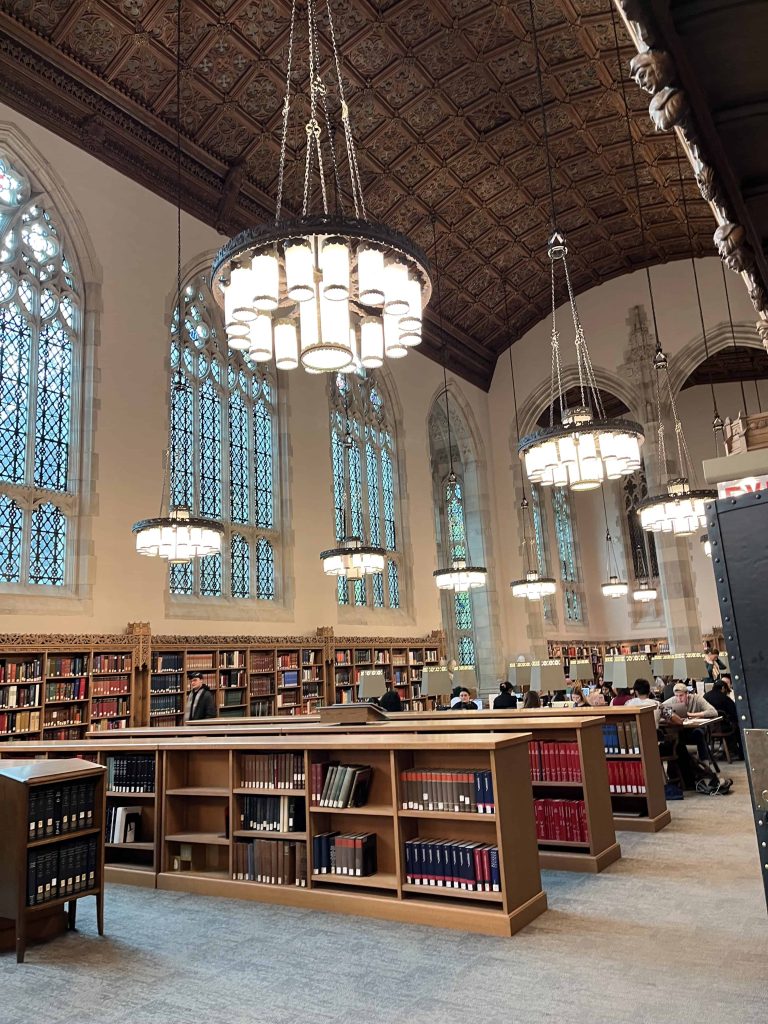It’s finally here – the big decision day! After a year-long grueling process of crying and panicking (also known as the college admissions process), the answers are finally here – and this time, it’s now up to us to make the decisions on where we’re going to spend our next four years. Whether it’s accepted, waitlisted, or rejected, the colleges have responded, but now, it’s up to us to actually decide the final destination. Which, I know, for being the thing that I’ve been looking forward to all year, is ridiculously scary. So, I’ve decided to share a couple tips and tricks to how I’ve been tackling my college decisions process, and in the end, how I’m going to be choosing the college I want to attend!

Firstly, here’s an introduction to how the college process works.
From around December to January or February, high school seniors are working on submitting applications to several colleges, which usually ranges from around 6-20 colleges total. For me, I applied to 21 colleges, which many people refer to as “shotgunning.” Shotgunning means applying to more colleges than necessary, typically over the limit on the Common App, which is 20 colleges. While I wouldn’t say shotgunning is a complete “do not ever do this,” I also don’t think it’s particularly necessary or helpful, so it’s best to stick to finding a good number of schools that you’re very interested in, and only applying to those. For me, I ended up with a good five or six schools that I applied to but realized “hmm, I was never going to go here anyways.” Better to save your money on application fees.
When do you get your decisions?
Once you submit your applications, you typically start hearing back from schools in March. Some schools are rolling admissions, which means that you can hear back within a few weeks on a rolling basis from the time you submit your application. The last of the decisions typically go until early April, which you then have until May 1 to decide the school that you will be attending. At this time, you’ll get either an accepted, waitlisted, or denied, but sometimes there’s more surprises – many schools offer merit scholarships or special programs for the students they’re especially interested in, so you might receive offers for those. Financial aid also typically comes out around the same time, so colleges will release their decisions for need-based financial aid, which can differ a bit between schools.
Now… How do I actually decide?
For many students, they have a dream school – the school they’ve been vying to go to, 100% committed in their minds, the #1 choice for them. Unfortunately for me, I liked to go around bragging that I never had a dream school. So to me, there wasn’t really a particular school that I was looking for in my college decisions, and I needed to figure out what school that would be throughout the process of deciding. But, here’s how I broke it down.
- Compare the actual programs and majors
This is especially helpful if you have an odd major, like me, where I wanted to study computational biology but ended up applying all across the board, from Computer Science to Chemical Engineering to Biochemistry. Because of this, I had to evaluate the major that I had applied for at each school that I got into, and whether or not I actually wanted to study “Biomedical Engineering” or “Biophysics” or whatever it was. To do that, I searched up the coursework and curriculum for my major at each school, and looked at whether or not the courses actually seemed interesting to me, while also comparing the rigor of the coursework and how well it would prepare me for the future. If you have the same major at all schools, you can check out ranking lists for your program to get a general sense of how well the school places overall, but make sure to look into the different aspects of why the school places well – is it the faculty, coursework, flexibility, or research that stands out?
In addition, people often ask about choosing between overall prestige vs. the prestige of their specific program, and this really depends on the certainty of your career goals. If you’re 100% set on what you want to do, I think it’s fine if you believe a less overall-prestigious school offers better opportunities in your field. But, if you’re not certain yet, a school that’s more well-rounded in many different fields will offer you more choices if you ever decide to switch your major.
- Create a list of “must-haves” and important qualities that you want in a school
At this point, you probably shouldn’t have any deal breakers on your list, since those should’ve been filtered out when you decided which schools to apply to. So, at this point, it’s a good time to consider your preferences and the differences between each school. Some qualities that may be good to consider are location, access to faculty, finances, student culture, interesting courses, and clubs. For me, I was particularly focused on the surrounding city and the student culture of whether it was collaborative or competitive. I really enjoy big cities with lots of things to do, so for the colleges that were located in small cities, I was particularly interested in visitng to make sure that I would enjoy the city, even if it wouldn’t be the dealbreaker. I’m also very interested in collaborative schools over competitive schools, which you can typically find the information for by asking during information sessions or going on school subreddits and forums to see what students have to say about it. Of course, there were ones that would be a significant plus if the school had it, but weren’t absolute dealbreakers. To me, these were grade inflation and the quality of the food. Grade inflation is helpful for students going into graduate school because it gives you a higher GPA if you’re applying to graduate school or medical school. On the other hand, many students prefer an extremely rigorous program, but I’m gonna be honest, I want a little bit of that grade inflation to make my life easier. And the while it may seem that the quality of the dorms and the food is insignificant, you are likely going to be living there for four years (unless you’re commuting), so it the quality of your living spaces are going to impact your quality of life. However, take these reviews with a grain of salt. Everyone’s taste is different, and for me, I tend to find that people often over-exaggerate how bad the dining food is, so maybe I’m just not as picky.

- Go on college visits
People always talked about a “gut feeling” and how sometimes you could just feel it when you stepped on campus whether or not this was the school for you. I thought that was just complete baloney – until I actually felt it. I went on a college visit to a school recently, and even though the school and the students were absolutely wonderful and I had a fantastic time there, I knew I just wasn’t feeling it, aand I decided that I really couldn’t see myself as a student there. So, I can now attest – the gut feeling is real, and it actually makes the decision a whole lot clearer. The school in question looked great on paper, but I just didn’t feel that it was a good fit for me once I was on campus, so it helped me narrow down my choices with certainty. If it’s possible, I recommend going on college visits and admitted students weekends to see if a school is for you, since it does help.
- Talk to alumni, current students, and admitted students
You know how there’s just certain people that you just vibe with? Well, a great way to find out if the students at the school are your kind of people is to go talk to people who are considering, enrolled, or graduated from the school to see if you think that this could be your type of people! Of course, don’t base your entire impression of a school on one or two people, but it’s a good idea to try to get to know the people that you’ll be surrounded by. Certain schools have a culture and type of student that they’re known for, like the University of Chicago is known for quirky, nerdy students who are passionate about their academic area, while MIT is known for innovative, intelligent students who love to build. These could all be just stereotypes, but I do think that each school has their own culture of students that they believe would be a good fit at their school that creates the school culture and personality.
- Consider your finances
Finally, inevitably, college is ridiculously expensive in the United States. In fact, I’ve heard of financial aid packages for colleges costing around $89,000 a year now, which is just absolutely insane. However, you can actually price match schools if you receive need-based aid. If you get into two similarly ranked schools and one offers better financial aid, you can tell the other school about the offer you received, and ask if they can match it. You can’t really do that with merit scholarships though, so for some schools, they have large merit scholarships that could make a significant dent in your college costs. There are actually several very highly ranked schools that do this. For example, Johns Hopkins offers the Hodson Trust Scholarship, which is a scholarship for $168,000, while Rice University offers the Presidential Scholarship for full-tuition. These are both great schools who offer lots of money for merit, and this could be a big consideration as you’re considering all your college choices.

Do you *realllyyy* need to go on college visits?
I ended up going on six college visits total, which I feel like was pretty excessive considering that by the end, I spent a lot of money visiting schools that I didn’t end up going to. However, I definitely did get a new impression of the school when I visited, so it can be worth it to go visit your top choices to see if it meets or exceeds your expectations. It can get pretty expensive to tour all these schools for admit weekend days, so make sure to check if the college will pay for your visit to their campus. Some colleges offer funding to fly in their students, especially for low-income, minority, or special program students, so make sure to check your application portals for this information. I had several of my flights covered this way, so this is a huge opportunity that you definitely shouldn’t miss, especially since college visits can get very expensive!
All in all, is it necessary to go on college visits? While I wouldn’t say it’s necessary, it can be pretty nice to check out the environment that you’ll be in for the next four years, since it might change your impression of the school. Sometimes, especially if you’re from a large city going to a small town or vice versa, the difference can be a pretty big deal. Don’t base your entire decision on the college admit weekend day though, because they often spice up the dining hall food and have extra programming to give the school better PR.
What if I’m disappointed with my college results?
Maybe you didn’t get into your first-choice. It’s okay to feel disappointed, but please don’t put your intelligence or self-worth based on where you get into for college. College decisions absolutely do not determine anything about you, so please don’t feel bad about yourself if you didn’t get into a school that you wanted. If you got waitlisted at some schools, you can send a letter of continued interest on your application portal detailing new updates to your application and re-establish your interest in the school. But for now, the best course of action is just to find a school that you got into that you can be excited about. Search up their programs and talk to current students, and find a new dream school from the schools you did get admitted to. Also, feel free to trash talk the school that rejected you, be salty about it, whatever you want, because honestly, that school really missed out on something special.
(Screw you, Harvard, for waitlisting me twice. Just kidding, I still love your biology labs.)
I’ve committed! What do I do now?
Once you’ve filled in the form online that tells a school that you will be attending, make sure to pay the non-refundable deposit to save your spot (if there is a deposit – some schools, particularly many Ivy League schools, don’t have a deposit). Make sure to let your other schools know that you’ve committed somewhere else as well! If you let your other schools know, this will open up a spot on the waitlist for other students to potentially get off the waitlist. Don’t try to stay on waitlists once you know where you’re going just to see if you can get in, because many other students are vying for the spot, so leave it for someone who’s really, really hoping to get in. Also, get excited for your new college! Go buy some merch, celebrate, watch videos about what it’s like to be a student, whatever you need to get excited. After all, you deserve it!
Okay, so how did my college decisions go?
Whoops! Better stay tuned for my next post where I’ll discuss my own entire college application process, college decisions process, college visits, and reveal where I’ll be going for the next four years!




your blog is a dream come true for the turbulent young nerd ❤ hold up so i can find gothic architecture and gorgeous libraries in schools that aren’t in the land of rainbows and unicorns? thanks for the consistently amazing posts ~( ̄▽ ̄)~*
Aww, thank you so much Anupuri! That’s so sweet of you 🙂 I’m so glad that my blog helps – and yes, I was super in awe of all the gothic architecture!